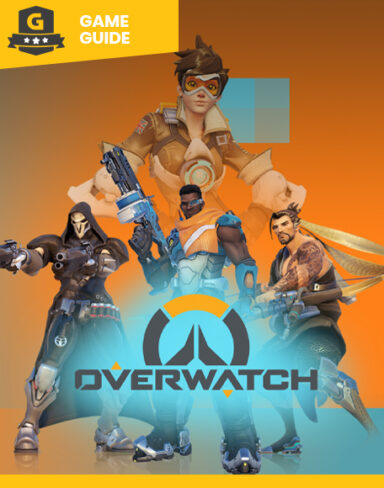Introduction
Part First-Person Shooter (FPS), part Multiplayer Online Battle (MOBA), Overwatch steers clear from conventional notions of shooting games with a diverse set of characters and game modes.
Each character fulfills a certain role within the team, and comes with their own set of unique skills to achieve certain objectives. Whether you prefer shielding your team from enemy fire, keeping everyone alive during a team fight with heals, or just outright killing enemies as efficiently as humanly possible, there’s a bit of Overwatch for everyone out there.
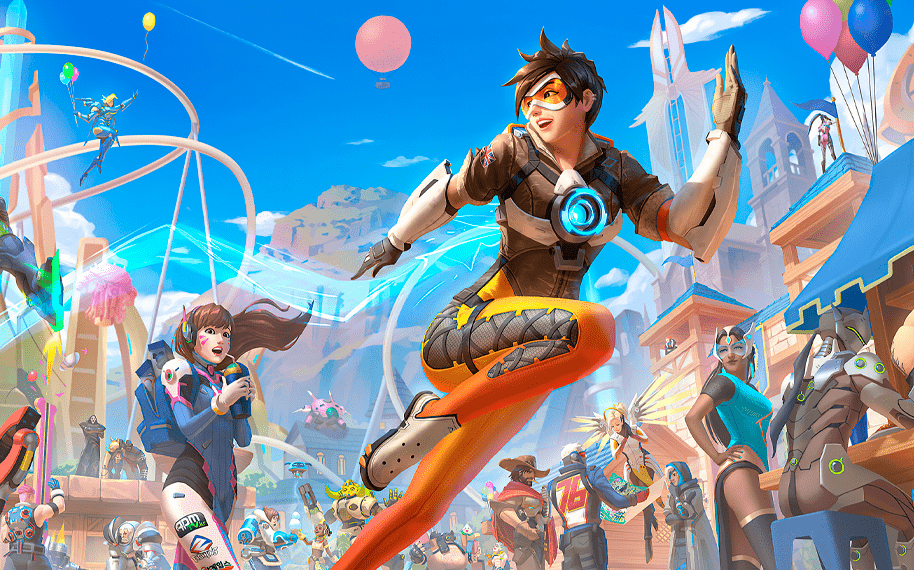
Gameplay Basics
There are several game modes within Overwatch, but primarily matches are centered around these 3: Quick Play, Competitive Play, and Arcade Mode.
Quick Play is relatively straightforward; you jump in, either with friends or random strangers, and just pick a hero and play. The context of the match itself differs depending on the objective of the map you get. Your Competitive Ranking will not be affected regardless if you win or lose in Quick Play.
Competitive Play is where things tend to get a little more serious. It’s largely similar to Quick Play, but your Competitive Ranking will go down if you lose, and up if you win. Naturally, this means players can get a little more ‘invested’ than usual. For Competitive Play, the team’s average Competitive Ranking will be used to find matches, and you may end up fighting with and against players within the same bracket, or one tier higher/lower than your own.
Arcade Mode is wholly different from your conventional matches altogether. Like Quick Play, whether you do well or not in Arcade Mode holds no water on your Competitive Ranking. As its name implies, this mode is just for fun, if nothing else. Objectives will be different, and some restrictions will be lifted. For example, players can choose the same hero to play. Certain maps can also only be found in Arcade Mode.
Outside of these 3 game modes, you can also join custom games, where pretty much anything goes.
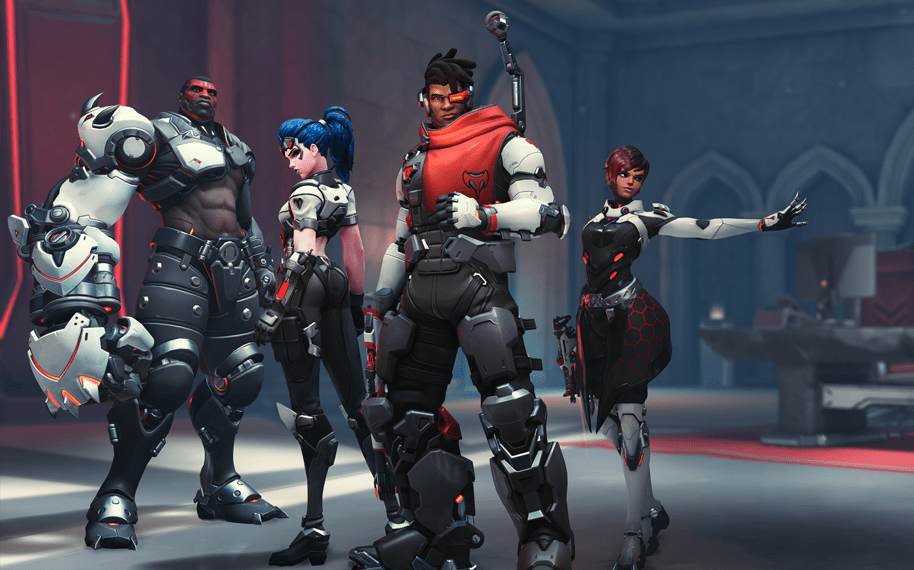
As we’ve previously mentioned, the objectives of any given match is different depending on the map. There’s Assault, Control, Escort, and Hybrid maps.
Assault maps split teams into offensive and defensive teams. The map will have 2 checkpoints, and the defending team has to guard these checkpoints, while the attacking team will try to take them over, or capture the checkpoint, as is commonly referred to amongst players. This is done by holding a position inside the area for a set amount of time. The first checkpoint is situated closer to the attacking team’s spawn location, making it harder to protect if the defensive formation falls. Once the first checkpoint falls, the attacking team will then be able to start capturing the second checkpoint, which is found right in front of the defending team’s spawn location, thereby turning the situation around. Examples of Assault maps include: Hanamura, Horizon Lunar Colony, Temple of Anubis, Volskaya Industries, and Paris.
Control maps are somewhat similar to Assault maps, but this time around, both teams are trying to fight for dominance over a single checkpoint. There’s no attacking and defending team in this instance. Examples include Busan, Oasis, Nepal, Ilios, and Lijiang Tower.
Like Assault maps, Escort maps have an attacking and defending team. But instead of trying to capture a checkpoint, the attacking team now has to push a payload all the way up to the defending team’s spawn point. The payload will move forward just by having the attacking team nearby, and moves backward if the defending team is hanging around it instead. Examples of such maps are: Dorado, Junkertown, Rialto, Watchpoint: Gibraltar, and Route 66.
Hybrid maps have elements of both Assault and Escort maps. Basically, the attacking team will have to capture a checkpoint before they are able to start pushing the payload. Examples are Hollywood, Eichenwalde, King’s Row, Numbani, and Blizzard World.
Depending on the in-game seasonal event, Blizzard may also sometimes release new game modes to give players a new challenge to sink their teeth into. For example, Yeti Hunt, Mei’s Snowball Offensive, Lucio Ball and Junkenstein’s Revenge.
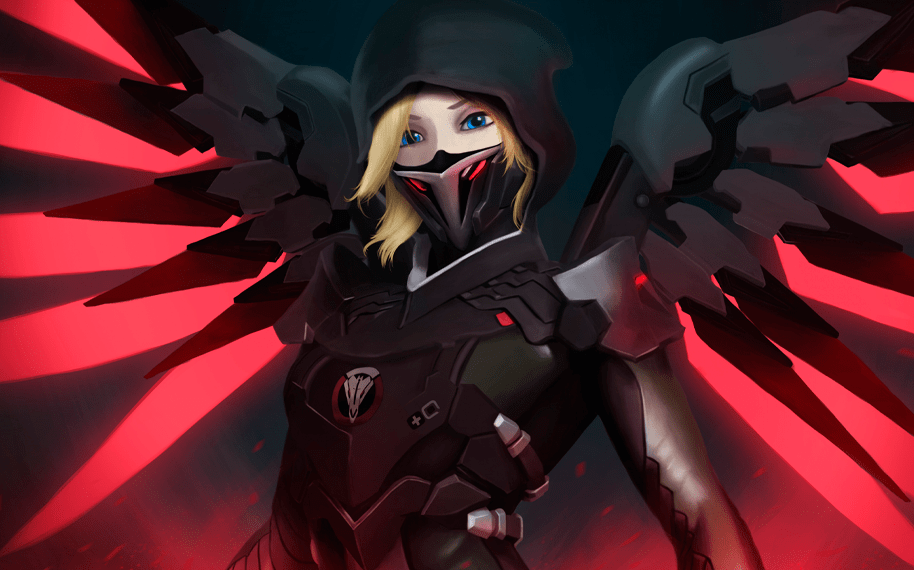
Understanding Heroes, Maps and Teamwork
In Overwatch, heroes are separated into 3 distinct categories: Tanks, Supports, and Damage. There are some specializations within the categories themselves but generally these are the 3 classes to choose from.
The names of the classes themselves should already give you a pretty good semblance of what role they play. Tanks are primarily responsible for soaking up enemy fire and making space so that the rest of the team can perform their individual roles well. Tanks are all equipped with a high HP, and sometimes shields. They also have generally bigger frames, making them easy targets to hit in combat. Examples include Reinhardt, Winston, and Zarya.
Supports are the primary healers of the team, tasked with keeping everyone alive as long as they can. Outside of healing, some Supports will have unique skills that can shift the tide of battle, either by increasing the team’s movement speed, providing temporary pockets of invulnerability, preventing the opposing team from healing or putting enemy players to sleep. Examples include Ana, Mercy, and Baptiste.
As you have probably gleaned from the name, Damage heroes are the main damage dealers of any given team composition. Their skills are highly diverse, and how they’re played is up to the player’s individual approach to fights. Some notable examples include Mei, Reaper and Widowmaker.
As a general rule of thumb, we recommend mastering at least one hero from each class. Some heroes will have certain advantages in certain maps, but we’ll go into that later. If you’re starting out, go for pure classes instead of heroes that fill a certain niche or a subclass. This will help you develop an understanding of the game’s mechanics better that you can later on use to practice with more specialized heroes.
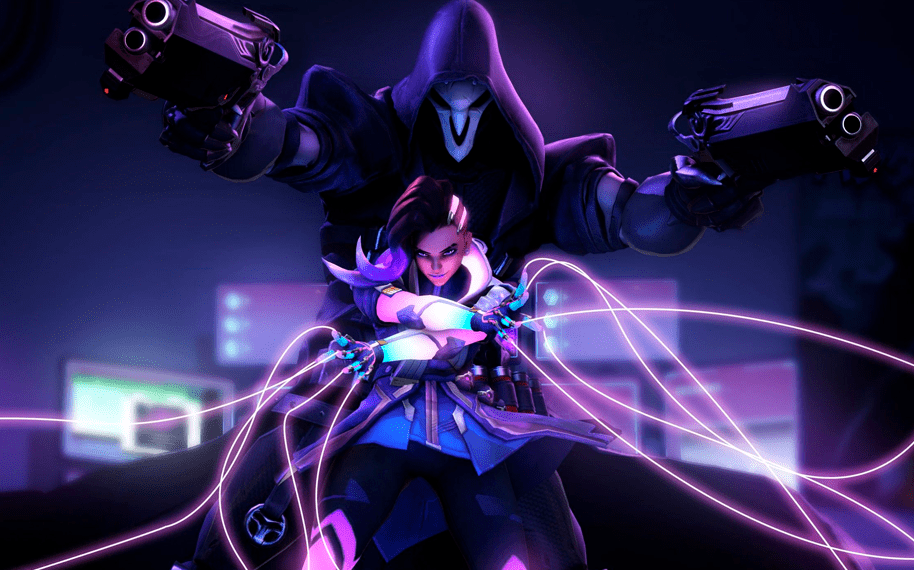
Honestly, there isn’t much advice to give besides just going into either Quick Play or Practice Mode and just playing. Pick any character you want and just familiarize yourself with their skills. What you should keep note of is the cooldown, the animation sequence and the range of effect. The strongest players have all this down to muscle memory, casually pulling off what would seem like clutch plays to beginners at the drop of a hat.
Aside from skills, you should also learn to get comfy with the basic attacks. Heroes like McCree have some recoil to his shots, Hanzo’s arrows dip a little if you release too soon or shoot too far away, and Junkrat’s bombs drop in at an angle. As with all FPS games, it will also do you well to remember how many shots you can make before you need to reload, and how long the reload animation will take.
While each hero has their own learning curve, some are going to be considerably less steep compared to the rest. For example, if you fancy yourself as a Support, try going Mercy so that you won’t have to worry about aiming, and if you want to play as a Tank, maybe go as Orisa so that you’ll have a reliable shield to hide behind.
Maps will sometimes offer certain advantages to certain heroes, and any player would know better than to not utilize the opportunity to gain the upper hand, especially at higher competitive tiers where any one moment could potentially lead to a shift in the winds of battle. As a beginner, you will want to at least familiarize yourself with the routes. How long does it take to get to the checkpoint? What paths can I take? What can I use for cover? Which places have the best vantage point? Understanding all these points will refine your gameplay overall, and more importantly help you make those split-second decisions in this game where every second counts.
Teamwork is vital in Overwatch, and to that extent, we cannot stress enough the importance of communicating properly to your team. Whether it’s as simple as call signs for when you’re going to put your shield down, or asking for heals when you’re running low on health, Overwatch is ultimately a team game, and effective comms go a long way in helping you nab that sweet win, and more importantly, making you a better player.
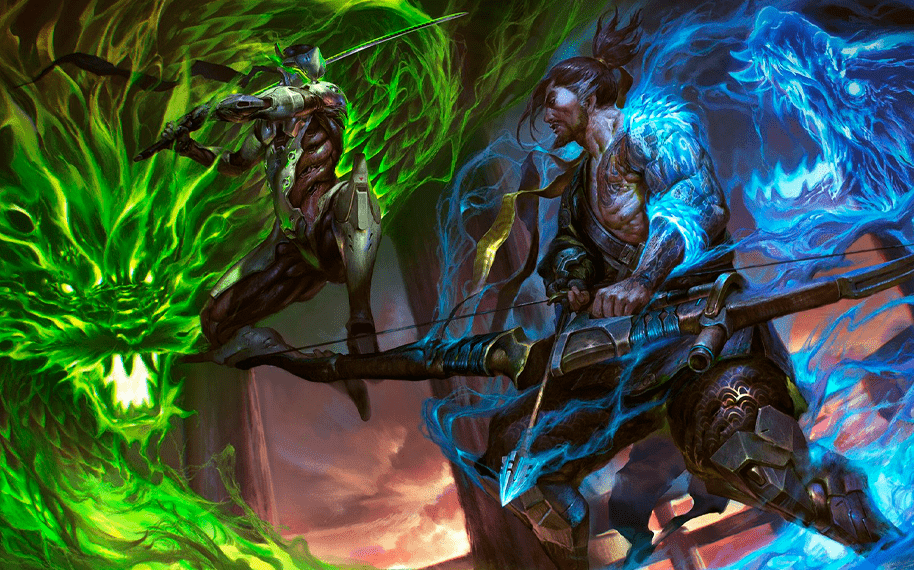
Heroes Strengths and Weaknesses
Assuming you now have some idea of the skills of your desired hero, you should be somewhat aware of 2 situations you’ll inevitably find yourself in throughout your Overwatch journey: when your skills will be effective, and when they won’t.
Some match-ups will heavily favor one side over the other, and overcoming such situations head-on generally require a high amount of skill, ingenuity, and most times luck. For a more effective approach, it’s much simpler to just take fights you know you can win, and avoid ones you’re not confident in. For example, using Winston to dive an uncontested Widowmaker, or backing off on Orisa if you see an enemy Reaper approaching.
This is also where skill cooldowns become a very handy tool in your knowledge bank. If you know your enemy’s skill is on cooldown, or if you’re able to bait them into wasting their skill on something else, you become better poised to take them on.
Granted, you won’t really find yourself in such ideal 1v1 situations very often. But even in team fights, some match-ups will quickly spell disaster for one side, and victory for the other, if nothing is done about the situation. That is why it’s always good to understand which heroes you can counter, and which heroes counter you.
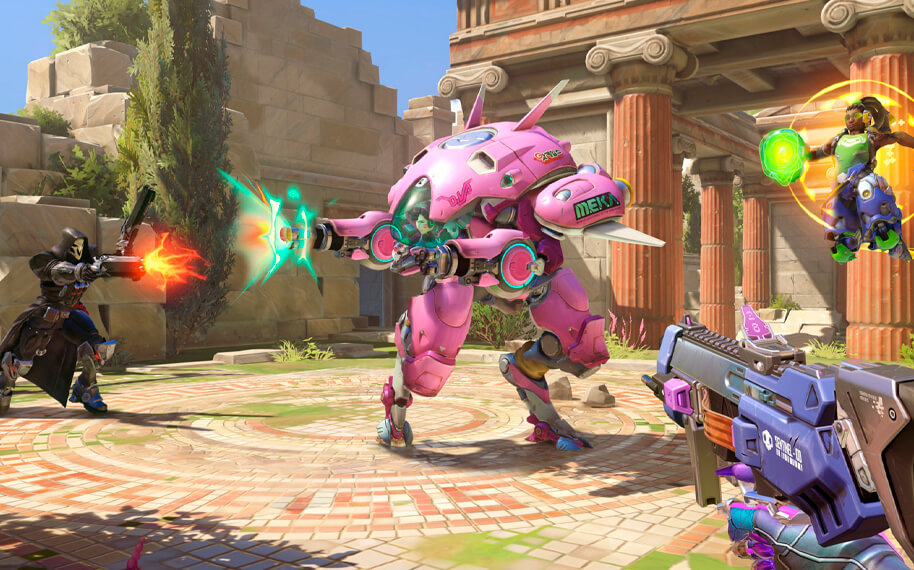
Team Compositions and Positioning
Understanding hero match-ups is just the tip of the iceberg. As we’ve previously mentioned, Overwatch is a TEAM game. Not only should you know which heroes work well against your enemies, you should also know which heroes work well WITH your teammates.
Team compositions, or team comps for short, will help determine how much synergy you and your team can churn out as a whole, and as a result, affect your chances of winning the game. As with hero match-ups, certain team comps will work well against others, and this can sometimes vary depending on the current meta.
Maps play a part in helping you decide which team comp to go for as well. For example, the reason why the infamous Pirate Ship comp — a variant of the Bunker comp — was so powerful in Junkertown was because of the large, open space and the lack of decent cover in the first section of the map, making it difficult for the defending team to get behind shields to kill off the Bastion.
This goes without saying, especially if you’re familiar with FPS games, but positioning is extremely important if you want to win fights sustainably. Learning to take the high ground or where there is cover to quickly back into, will at least lower your chances of losing a fight, if nothing else.
Beyond that, be familiar with your character model, or more specifically, your hero’s hitbox, and position yourself in a way that you lower the enemy’s odds of hitting you as much as possible. To that end, strafing and crouching are good tricks to pick up, especially if you’re the type to go for flanks.
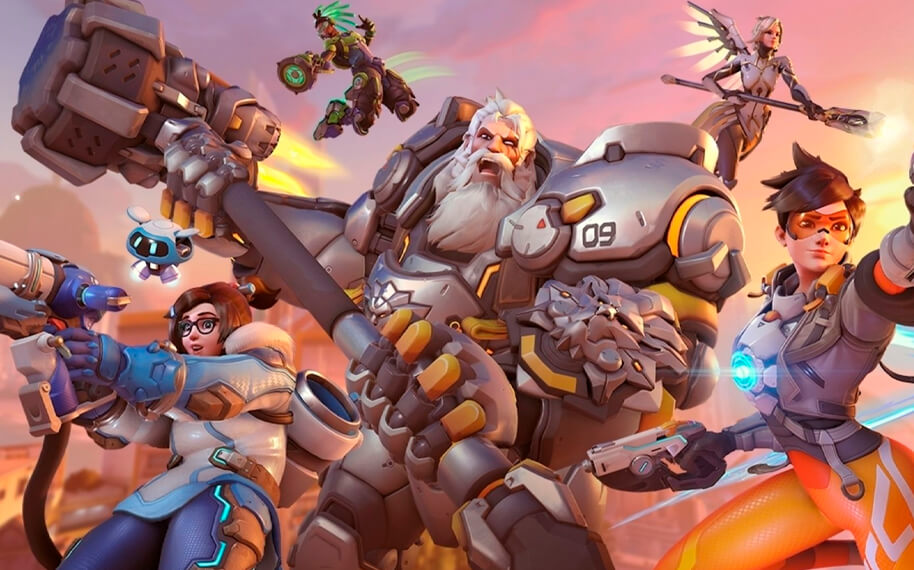
Teamwork
Mentioning this for the third time, in case you forgot, but Overwatch is a TEAM game. This means the team’s win should always be put above your individual wins. Avoid getting too bloodthirsty after getting a few kills and remember to always work together as a team. You don’t necessarily have to stick together the whole time, but whatever you do, you should always be working towards achieving the team’s goals.
That said, sometimes killing the enemy team is a surefire way of securing a win, and it is up to you to gauge the situation before deciding to make that play. A lot of times, whether you win or lose a match hinges on the decisions you make and the strategies you choose to take. Getting more experience playing definitely helps, but so does watching pro plays and learning their strategies and how they communicate with one another.
Outside of match objectives, priority should also be applied to your fights. For example, you may decide to take down the Supports first to cut off the Tanks’ supply of heals, in order to kill them off more easily. However, as Supports often stay behind Tanks, your chances might not be great if you don’t have strong flankers on your team. As such, you may instead choose to disrupt the enemy formation by creating space bit by bit with your Tanks, allowing the Damage heroes on your team a better shot at isolating and killing the enemy Support. Priority in fights will largely depend on the match-up between heroes, positioning, the skills available for use, as well as the technical skill and strategy of both teams.
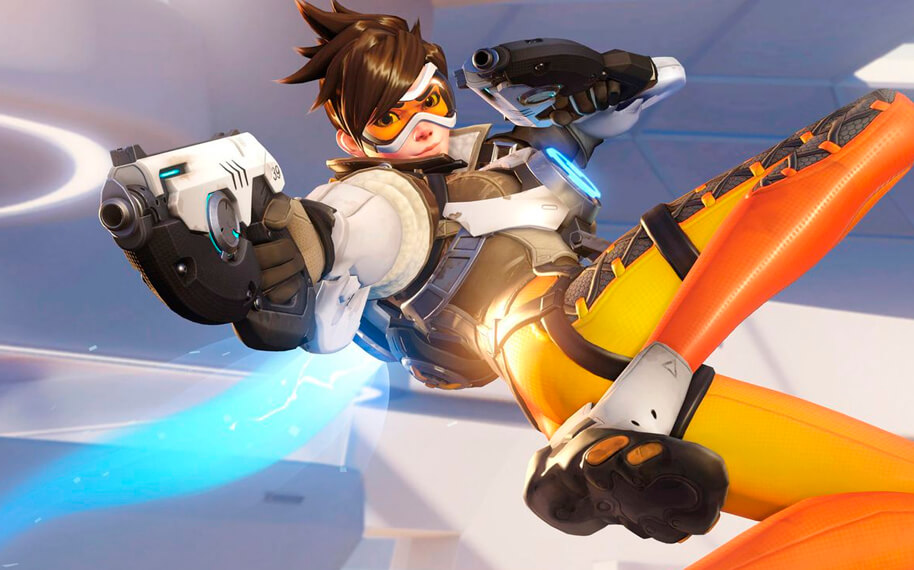
Tips & Tricks
Aiming
Like all FPS games, you’ll have a better time finding success if you already have some mastery over aiming. Games like Battlefield or Call of Duty are generally good to develop the right motor skills, reaction speed, and hand-eye coordination for many other FPS games, including Overwatch. However, if you don’t have any prior experience, that’s fine too. We do recommend visiting the game’s Practice Mode more often if that’s the case, instead of diving straight into actual matches. The reason being that by hitting those random headshots, there’s a chance you could actually develop reflexes counterproductive to aiming itself. Committing something to muscle memory takes a lot of repetition, and aiming is no exception. Aside from honing your game sense, actual matches hardly serve as a controlled environment to develop your motor skills properly, which is why we suggest going into Practice Mode instead.
Alternatively, if you prefer a more responsive way of practicing, Aim400kg is a pretty good platform to train your aiming. They have several different modes, each geared towards a certain aspect of aiming such as precision, reaction speed, and the like. You can also keep track of how well you’re doing by the score you get at the end. Try to spend at least 15-30 minutes each day practicing, and you’ll be popping headshots one after the next in no time. It also serves as a good warm-up before you get into the actual game itself.
Animation Cancelling
Animation cancelling is fairly easy to pick up with enough practice. Timely animation cancels will only net you a few short frames of time, but they can sometimes mean life or death, so it’s always a good idea to get them down to muscle memory. Do bear in mind that some animations can be cancelled, while others can’t. There’s ton of videos online showcasing the animation cancels you can find in Overwatch. One example would be McCree, whose reload animation can be cancelled out with a melee attack launched at the very end, right after his bullets enter the chamber of his pistol.
C9
As you can see, a lot of times you’re required to either seize control of a checkpoint or push a payload in Overwatch. And when some players get into the zone, they can sometimes develop tunnel vision towards killing enemies instead of watching over the objective. When this happens, you can steal the objective from right under their noses by sneaking past their formation and just camping near the objective, a phenomenon (strategy?) known in the community as C9. This is also why it’s important to always keep track of your enemies’ movements and fight near the objective to prevent your team from getting C9-ed. If you really must fight away from the objective for whatever reason, always make sure to check its status from time to time.
Environmental Hazards
Understanding maps means to be aware of which locations would be advantageous to you, and which you’d do well to avoid. Obviously, pitfalls check both these boxes, and they are commonly used in maps where it’s highly plausible for someone to fall off the edge. Ilios:Well is a notorious map when it comes to this, due to the large gaping hole in the center of the checkpoint. Players who are experienced in knockbacks or crowd-control skills (looking at you Lucio mains) will be especially proficient in using these pitfalls to their advantage.
Combos
In Overwatch, some skills just work notoriously well with one another. For example, the infamous Graviton Surge and Dragonblade combo. Sometimes, it’s not enough to be using just a single ult to get that team kill. Reaper’s Deathblossom is helpless if he gets stunned or knockbacked, McCree’s High Noon can never hope to get past a shield, and Genji’s Dragonblade won’t nab any kills if he gets hit with a sleep dart. The list of scenarios are potentially limitless. In such situations, having a bit of innovation helps. Understanding how skills and ults can play off one another will often make or break your game, and the greatest plays almost always involve catching the enemy team by surprise. For example, using Mei’s Ice Wall to bring McCree over obstacles as he’s readying High Noon.
Feints
This one’s for McCree specifically, but simply put, if you’re facing a Reinhardt and you’re playing a McCree, you can stun him by throwing your stun grenade over his shield. Experienced Reinhardt players will know to face their shield upwards whenever they see a McCree aiming over their heads, so use that against them by pretending to throw the grenade over them and bait them into putting their shield overhead. This opens up a gap for you to actually throw the grenade under them.
Emoting
In case you didn’t know, emoting shifts your camera into third-person view. This also allows you to see behind corners, and can be useful whenever you’re trying to get past a potential ambush point. It also sometimes helps you see enemy locations whilst remaining hidden, a crucial advantage to have for snipers.
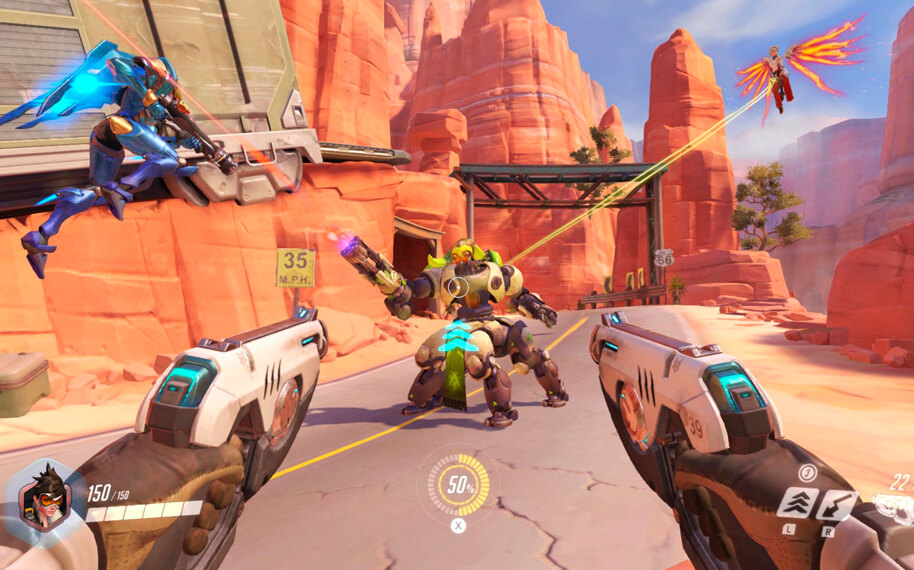
- 9.8Total Score
Considered one of the greatest video games of all time, it is also a classic in esports competitions. With credentials like these, what are you waiting for? It's time to play!
- THE GOOD
- Cast and locations feel like people and places
- Even casual players can fairly compete with others
- Expert players have plenty of heroes to use and adapt to the tactics of the game
- The environment is much more colorful and positive than your usual shooter game
- THE BAD
- The competitive play mode could be toxic at times, as competitions tend to get




